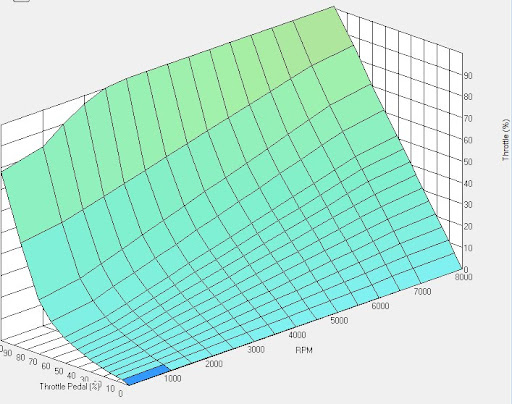else it's going to be another 15 pages of arguing whether a ford fiesta 110hp engine instead of 680hp 2.4l v8 is a form of traction control system
- Login or Register
No account yet? Sign up
Dragonfly wrote:Did you read the quote by jz11?
I think, it (VVT & VVL) "died" in 2006 when the V8's where introduced into F1.Raptor22 wrote:Dragonfly wrote:Did you read the quote by jz11?
Yes and I am very surprised by that since VVT has been part of F1 engine technology since the 80's. Variable length trumpets I could understand were fairly complex and worked in conjunction with VVT.

gato azul wrote:I think, it (VVT & VVL) "died" in 2006 when the V8's where introduced into F1.Raptor22 wrote:Dragonfly wrote:Did you read the quote by jz11?
Yes and I am very surprised by that since VVT has been part of F1 engine technology since the 80's. Variable length trumpets I could understand were fairly complex and worked in conjunction with VVT.
I see where you're going. You have more flexibility with wet running engine settings - those same settings would ultimately reduce wheel spin in dry conditions, so why not run a wet setup in the dry. Apart from the flashing red light giving the game away, why would they not do that now? Surely it's not illegal to run a wet setting in the dry. The teams must have considered this, no?raymondu999 wrote:I have a question that is somewhat related, yet not entirely.
What about doing what Hamilton did in Hungary 2012, or Vettel in Brazil 2011? Using an intermediate map in dry conditions? Someone mentioned a possible (I was one of them, too) use of Hamilton doing that was that he would have an easier time managing wheelspin under traction, to help preserve the rears in that final stint of the grand prix.
Given that it seems to have been a thing that most teams do at times, and really nobody protests, I'm assuming it's legal.
But would it have the same effects? ie you stamp the throttle harder for the same level of torque/power output, and get more exhaust gases? While at the same time, the reduced torque/power output means the driver can manage the wheelspin better under traction?
well, why make things more complicated then they are?Raptor22 wrote: Thinking back, it may have come in as part of the RRA in 2009? .
2006–2012
For 2006, the engines had to be 90° V8 of 2.4 litres maximum capacity with a 98 mm maximum circular bore, which imply a 39.7 mm minimum stroke. They had to have two circular inlet and exhaust valves per cylinder, be normally aspirated and have a 95 kg (209 lb) minimum weight.
Pre-cooling air before it enters the cylinders, injection of any substance other than air and fuel into the cylinders, variable-geometry intake and exhaust systems, variable valve timing were forbidden. Each cylinder could have only one fuel injector and a single plug spark ignition
The same effect as what? As the "magic" Renault/RBR engine map in Hockenheim?raymondu999 wrote: But would it have the same effects? ie you stamp the throttle harder for the same level of torque/power output, and get more exhaust gases? While at the same time, the reduced torque/power output means the driver can manage the wheelspin better under traction?

So, how will this translate with the recent dramas? This could be a sticky wicket for Mercedes, if I understand correctly, they will have to reduce the overall torque of their engine, in-line with what the map should correlate with. Is this correct? I don't think they free to produce any map to control the engine - as that's what RBR did, so a new map is not enough?Auto Motor und Sport said Mercedes has "recognised the problem" and is working at full speed to improve its engine torque maps.

As long as 100% throttle = ~100% torque they should be fine. They should have a bunch of room to play around with in the partial throttle openings.Cam wrote:Good call on the Thread Name.
I'm not familiar with the engine freeze regs, will Merc be able to adjust their engines or is it maps only? And if it's maps only, won;t they fall into the same trap as RBR, that is, the engine map would be less than the engine is capable?
Well I know of atleast one car who's had the red light flashing in the dry...Cam wrote: Apart from the flashing red light giving the game away, why would they not do that now? Surely it's not illegal to run a wet setting in the dry. The teams must have considered this, no?